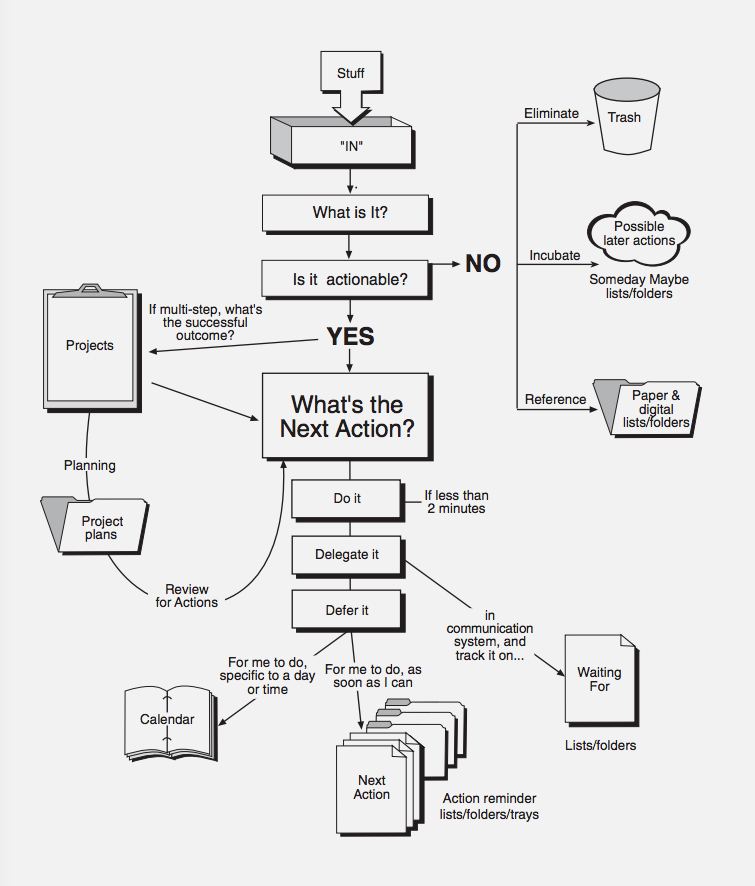Getting Things Done
I dug in the book with high expectations, confident it would actually improve my
“productivity habits” and make me more productive in both personal and work
life.
The proposition is seducing, who wouldn’t want to set aside all the
noise and the effort required to be organized in favor of just “Get Things
Done”?
Spoiler:
Unfortunately, this method did not help me increase my productivity x10.
A little bit of background
The GTD method is a very famous productivity framework aimed at helping people
manage their tasks and reach their objectives.
It conceptualize a way to
free your brain of it’s resource intensive “storage capacity” allowing for a
better allocation of it’s “processing capacities” (not the author’s way of
describing things).
The “system” becomes the repository of all that is needed to be done, a unique source of truth for what’s next for you to do, removing the tiring overhead of managing the million things that require your constant monitoring.
The theoretical foundations of the method are quite simple, it is in fact a simple decision tree:

And most importantly, the implementation details are tool agnostic, meaning
that the user is left with a lot of freedom in defining the actual instruments
with which pursue the goal towards productivity.
It can be proprietary
software, a FOSS alternative or even the humble pen and paper.
My thoughts about it
Despite the low score, I’ve enjoyed the book but I’ve encountered some limitations when trying to apply its fundamentals on my own journey for productivity; and that’s why it’s hard for me to recommend it, unless you are exceptionally committed.
In my opinion, the most limiting factor in using GTD, is the continuous war of attrition needed to simple maintain the system in an usable state.
Constantly updating the status of “stuff” instead of doing “stuff”.
I found that when I’m completing a task and pushing a project forward, all the “overhead of storing information” has moved into updating the various states, lists and views required to keep the framework running.
I have chosen taskwarrior as my productivity tool and despite its wide range
of customization options, the endless tweaking capabilities and the fact that
some people have managed to use consistently with GTD, I have often found myself
unable to focus on what is important because I am always updating the meta data
of some task or changing the scope of a project and so on.
In the GTD defense, that’s not a tailored tool for the methodology, which might address some of the issues behind the steep learning curve and help consolidate effective productivity habits. But I’m not interested in splurging money on a proprietary tool or locking-in behind a walled garden, so I’m committed to the FOSS way.
In the end I gave the book a low score not because I don’t think GTD is an effective method for reclaiming control of your To-Do list, but rather because the book does not an equally effective job at allowing the reader to implement such a system. The technologies referred to in supporting the framework are quite outdated. A seminary or a workshop would be a much more effective way of teaching the method.
Book Details
- ISBN: 9780143126560
- Published: Penguin Books
- Pages: 267